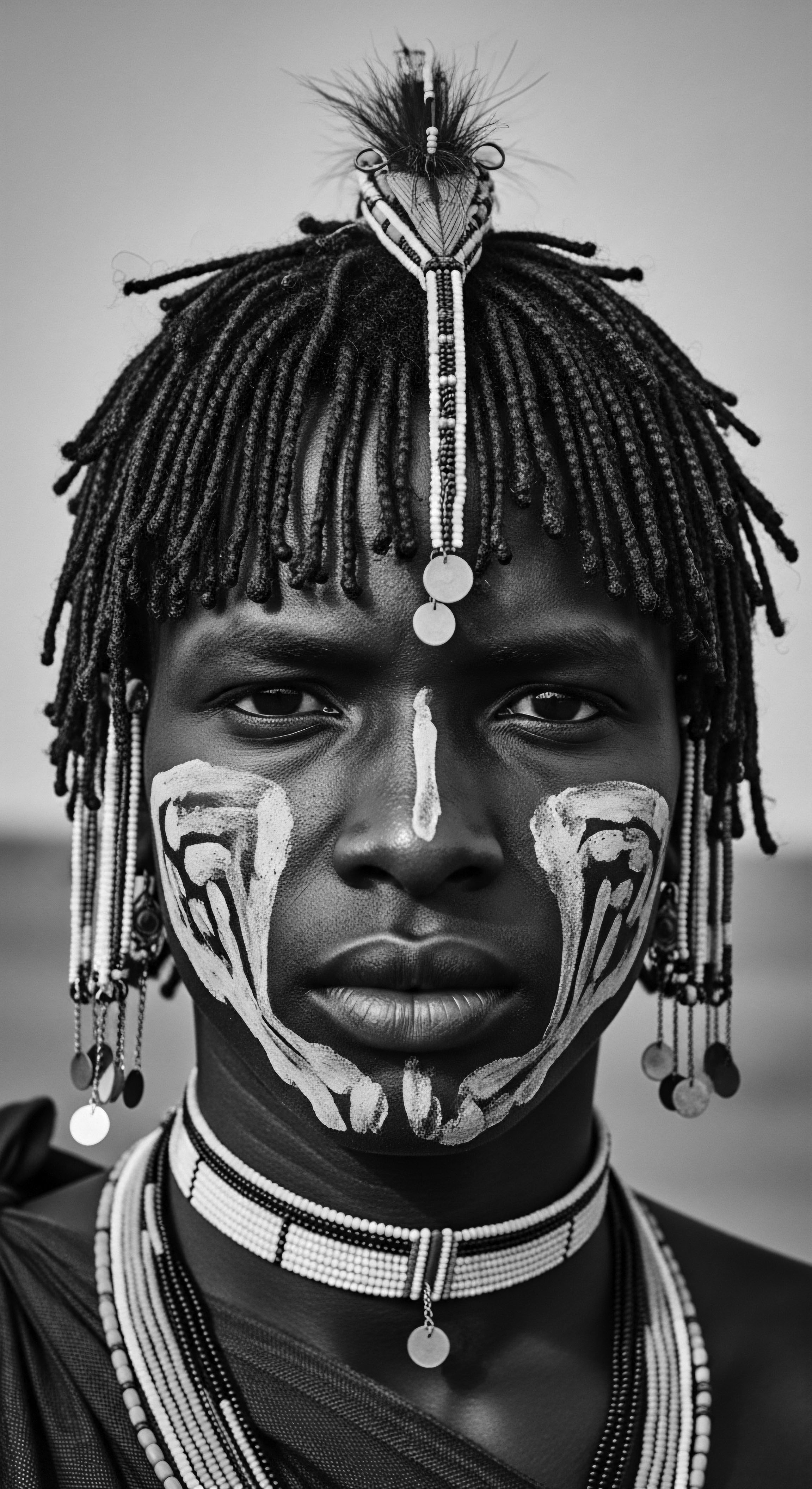
Fundamentals
Across the sprawling expanse of time, where the waters of the Nile pulsed as the lifeblood of ancient civilizations, there emerged a profound communion between the human spirit and the very strands that crowned one’s being. Ancient Nubian Adornment, a term steeped in the sun-drenched narratives of a land once known as Kush, transcends a mere definition of decorative objects. It represents a vibrant dialogue between personal identity, communal belonging, and the ingenious manipulation of natural textures—the coils, kinks, and waves that were as much a part of the landscape as the river itself. This was not a passive embellishment; rather, it served as an active declaration, a visual language spoken through metals, beads, and meticulously arranged hair.
For the earliest Nubians, adornment began with the elemental. Earth pigments, natural oils, and the bounty of the river—shells, pebbles, and reeds—were the initial palette. These materials, simple in their origin, gained immense meaning through their careful application and the rituals that accompanied them. The concept of Adornment here extends beyond jewelry.
It encompasses the intricate styling of hair itself, often seen as a direct extension of one’s spiritual and social self. Hair was not just fiber; it was a living canvas, a conduit for ancestral memory, a testament to resilience. The earliest forms of Nubian hair practices, long before the grandeur of gold, likely involved practical considerations for survival in an arid climate, leading to protective styles that would then become foundations for embellishment.
Ancient Nubian Adornment served as a dynamic visual language, articulating identity and communal ties through intricate hair practices and material embellishments.
The meaning of these early adornments was manifold. They could signify status within a family or clan, mark rites of passage, or offer spiritual protection. Children, for instance, might wear specific types of beads or braids to ward off harm, a practice reflecting deep-seated ancestral beliefs.
As Nubian societies evolved, the materials became more refined, the craftsmanship more sophisticated, yet the underlying intention—the deep connection to one’s essence and the continuum of communal heritage—remained steadfast. The earliest forms of adornment, therefore, speak volumes about an ancient people’s understanding of their environment, their spiritual world, and the innate human desire to express individuality within a collective.
When considering the Heritage of textured hair, the Nubian approach offers a singular window into ancient care. These practices laid the groundwork for methods that resonate even today ❉ the oiling of strands to retain moisture in dry climates, the braiding and coiling to minimize breakage, and the incorporation of natural elements for both health and beauty. The simple act of adding a carved wooden bead to a tightly coiled strand, for example, initiated a tradition where function and beauty were inextricably linked. This foundational understanding sets the stage for a deeper exploration of how these early interactions with hair and its embellishment formed an enduring legacy of care and cultural expression for Black and mixed-race hair experiences.
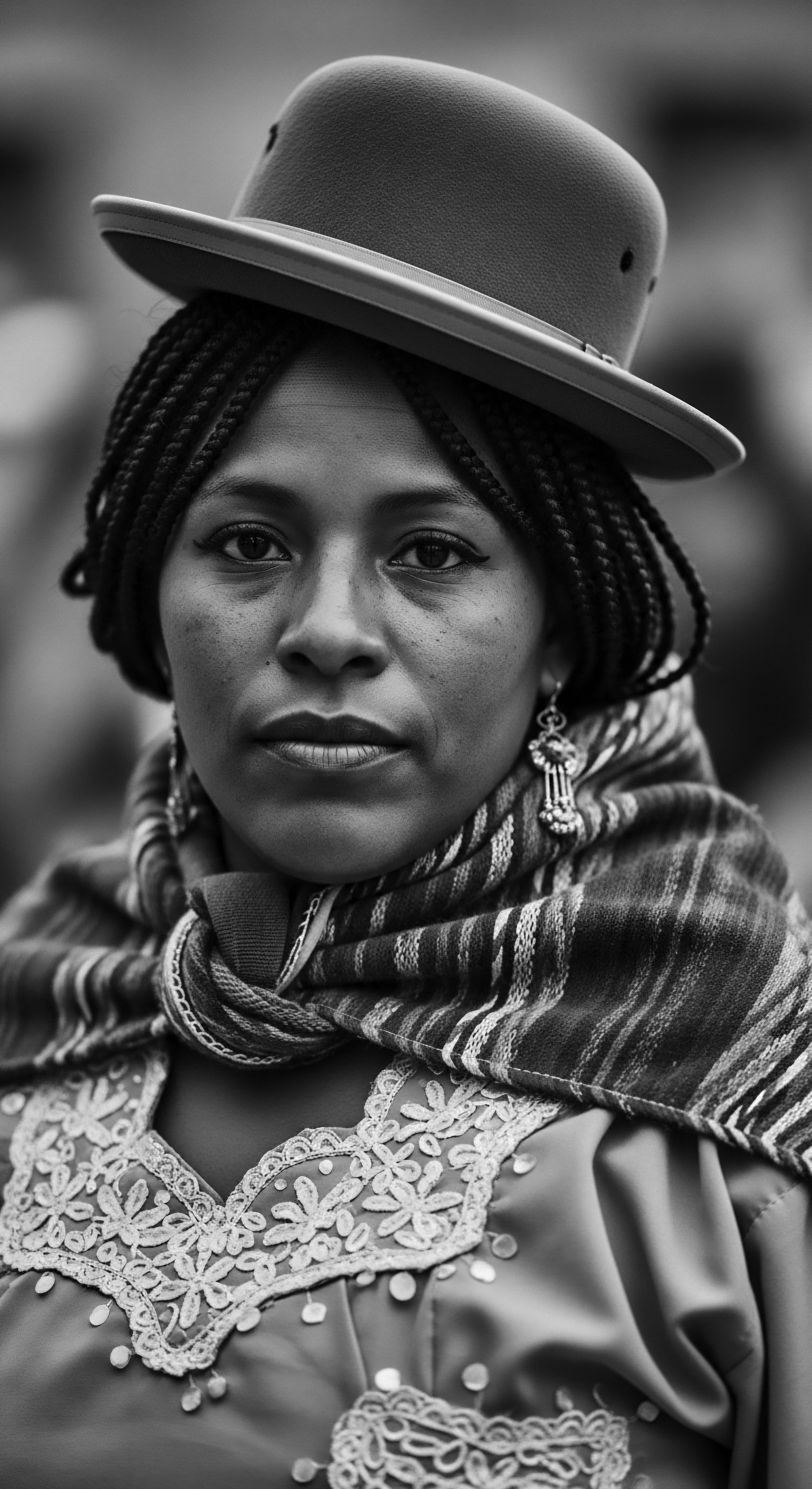
Intermediate
Stepping beyond the fundamental principles, the meaning of Ancient Nubian Adornment deepens as we consider the intricate interplay between socio-political structures, spiritual beliefs, and the ever-evolving expressions of hair. During periods of greater prosperity and centralized power, particularly within the Kerma and Napatan periods, the sophistication of adornment soared, transforming from rudimentary embellishments into potent symbols of royalty, divine connection, and societal hierarchy. The gold mines of Nubia, legendary in their abundance, provided a rich medium for skilled artisans to craft pieces of unparalleled beauty and complexity. These were not merely decorations; they were statements of authority, piety, and the very spirit of a sovereign people.
The Napatan and Meroitic periods, in particular, witnessed a spectacular flowering of adornment, often depicted in temple reliefs and tomb paintings. Here, the hair itself became a structural marvel, carefully sculpted and arranged to accommodate and amplify the beauty of the precious metals and stones. The elaborate hairstyles, frequently featuring meticulously plaited or coiled sections, served as the very scaffolding for heavy gold pectorals, intricate amulets, and crowns adorned with uraei and solar disks. This synergy between hair preparation and adornment underscores a sophisticated understanding of textured hair’s unique capabilities—its tensile strength, its ability to hold shape, and its remarkable versatility.
Consider the profound importance of hair in ancient Nubian culture. It was often viewed as a spiritual antenna, a connection to the divine, and a repository of personal power. The meticulous care and adornment of hair were thus acts of reverence, both for the individual and for the ancestral lineage.
This reverential attitude shaped the methods of care, encouraging practices that maintained the health and integrity of the hair, allowing it to support increasingly elaborate and significant adornments. For instance, the use of rich oils and plant-based conditioners would have been essential to prepare hair for the strain of heavy jewelry, maintaining its pliability and preventing breakage.
The symbiosis between sophisticated Nubian adornments and carefully styled textured hair reveals an advanced understanding of hair’s structural capabilities and its profound cultural meaning.
A unique aspect of Nubian adornment lies in its consistent connection to the broader spectrum of Black Hair Experiences. Unlike some ancient cultures where hair might have been entirely covered or shaved, Nubian iconography frequently displays hair as a prominent feature, celebrated in its natural texture and augmented with artful additions. This emphasis on visible, styled hair adorned with cultural markers speaks volumes about self-acceptance and pride in indigenous aesthetics.
It stands as a powerful ancestral blueprint for textured hair heritage, asserting its inherent beauty and its capacity for regal expression. The historical record suggests a society where hair was not concealed but rather exalted as a central component of identity and beauty.
The materials used in adornment held specific meanings that deepened their interpretation. Gold, for instance, was associated with the sun god Ra and the flesh of the gods, signifying divinity and royalty. Beads, crafted from faience, carnelian, or glass, often carried symbolic protection or represented specific lineages.
The careful selection and arrangement of these elements within hair styles were not arbitrary; they were deliberate acts of communication, conveying a complex narrative of status, spiritual belief, and personal journey. This elevates the meaning of Ancient Nubian Adornment beyond mere decoration; it becomes a form of historical narrative, etched into the very coiffures of its people.
The practices of hair care and adornment were often communal. Generations passed down knowledge of specific braiding techniques, the preparation of natural hair treatments, and the proper methods for securing heavy ornaments. This oral transmission of ancestral wisdom solidified the role of hair as a binding force within families and communities, fostering a shared heritage of beauty and resilience. The tender touch of a mother braiding her daughter’s hair, preparing it for the addition of significant beads or a ceremonial headpiece, represents a living thread of tradition that extends into the present.
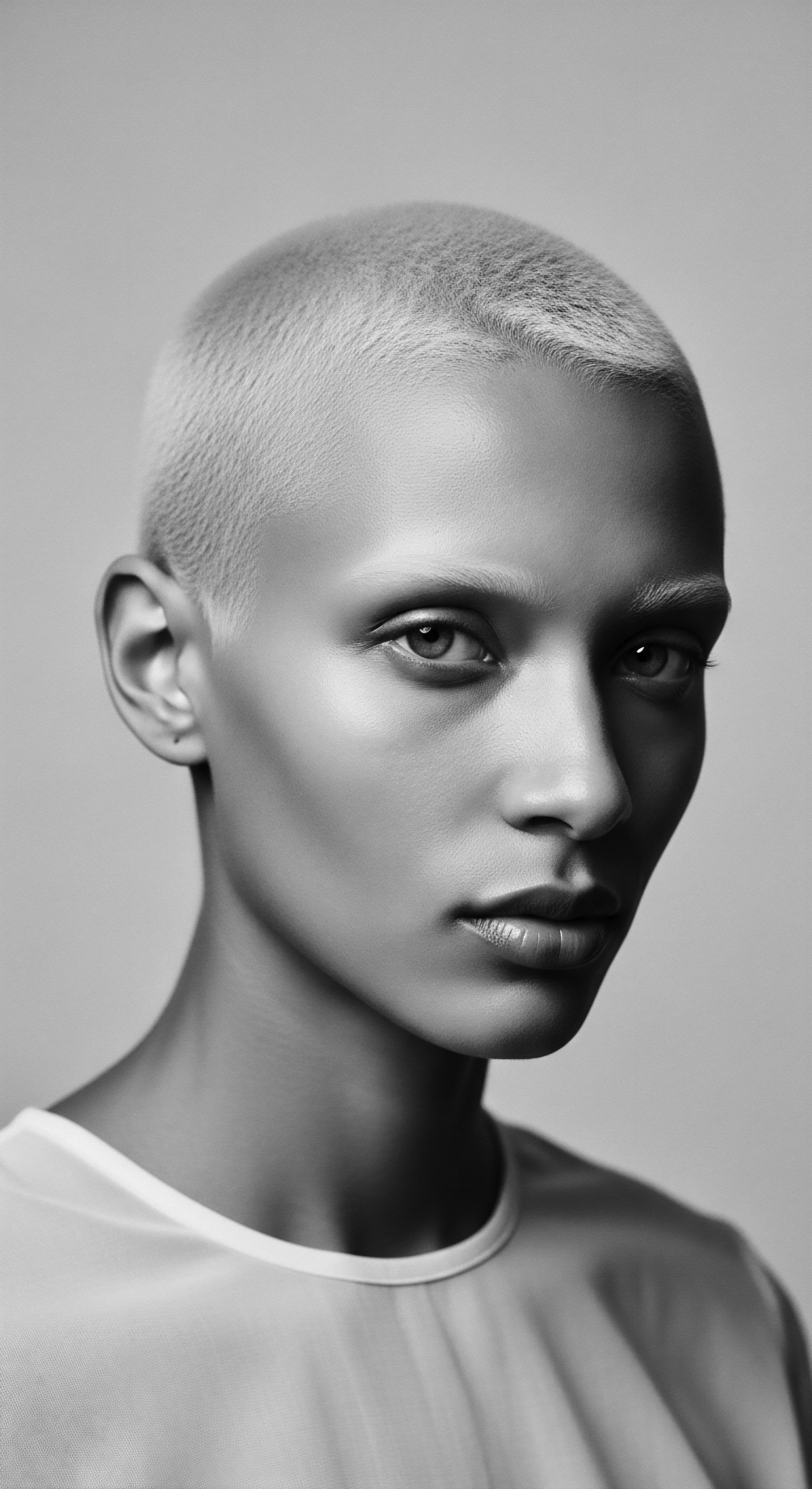
Academic
The academic definition of Ancient Nubian Adornment transcends a simple descriptive overview, demanding a rigorous examination of its complex semiotic functions, its material culture, and its profound implications for understanding Afro-diasporic hair heritage. It stands as a comprehensive term encapsulating the diverse range of personal embellishments, both organic and inorganic, applied to the body and, significantly, to the hair, within the ancient Nubian civilizations that flourished along the Nile from the prehistoric periods through the Meroitic era (circa 3000 BCE – 350 CE). This designation necessitates a multidisciplinary lens, drawing insights from archaeology, art history, anthropology, and even contemporary hair science, to fully comprehend its multifaceted significance.
At its core, Ancient Nubian Adornment is an active process of identity construction and communication, deeply interwoven with the distinctive characteristics of textured hair. Unlike many Eurocentric beauty canons, which historically devalued or marginalized natural hair textures, Nubian aesthetic traditions consistently celebrated and amplified them. The adornments were not intended to conceal or straighten but rather to enhance, organize, and symbolize through the unique properties of coily and kinky strands. The Delineation of status, spiritual affiliation, and individual narrative frequently occurred through the strategic arrangement and embellishment of hair, establishing it as a primary site for corporeal expression.
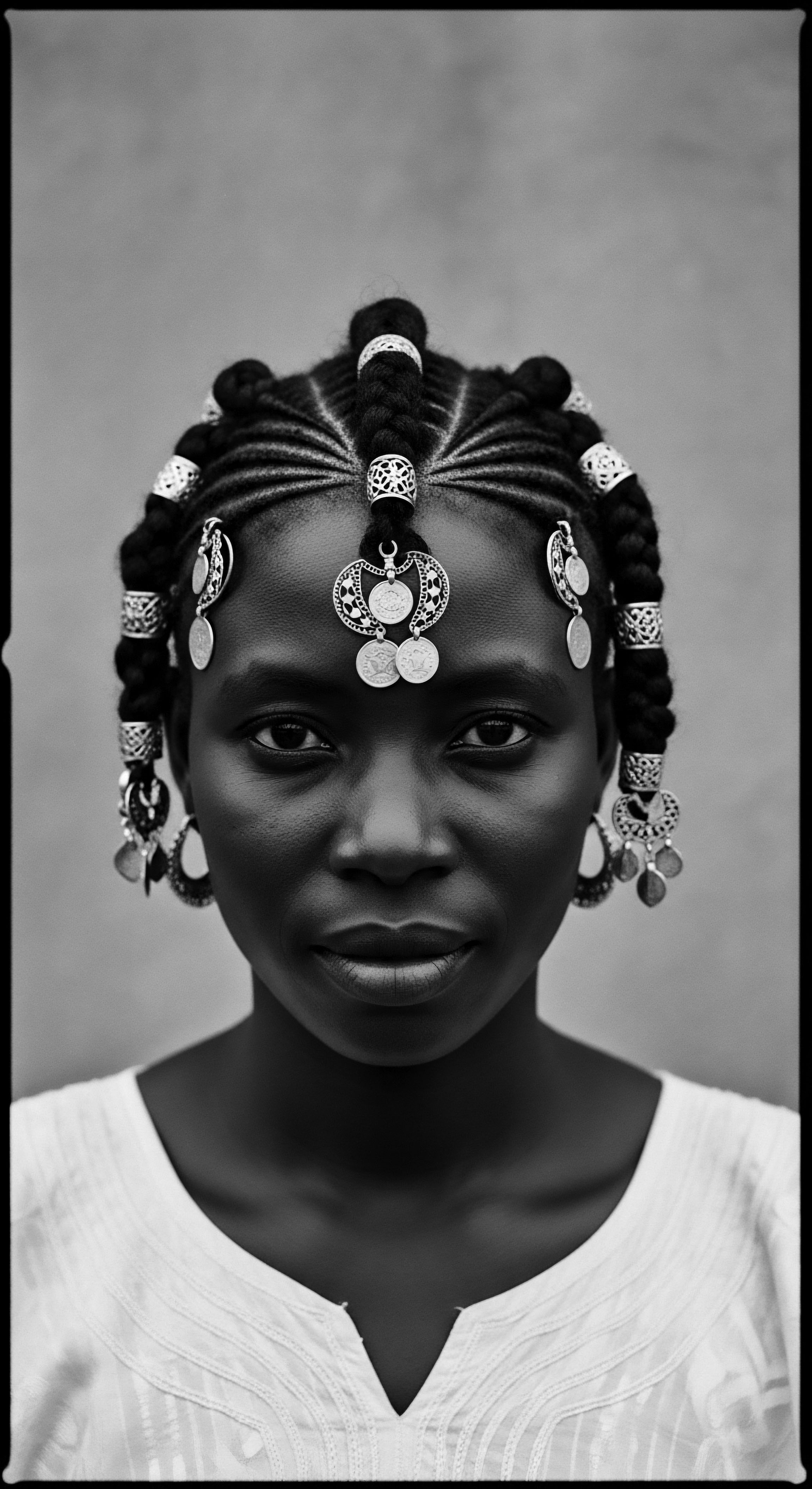
The Materiality of Meaning ❉ Archaeological Insights into Adornment and Hair
Archaeological findings provide compelling evidence of the sophistication of Nubian adornment and its direct relationship with hair practices. Excavations at sites such as Kerma, Napata, and Meroe have yielded a rich corpus of personal ornaments ❉ gold earrings, necklaces of faience and carnelian beads, shell bangles, and elaborate hair rings. Crucially, iconography from tomb paintings, stelae, and statuary frequently depicts these adornments integrated into complex hairstyles. For instance, the Meroitic queens, known as Kandakes, are consistently portrayed with highly stylized coiffures often featuring what appear to be tightly braided or coiled structures, upon which intricate headpieces or diadems rested.
One particularly illuminating example of this symbiosis comes from the Meroitic period, famous for its powerful Kandakes. Their funerary complexes, such as those at Begrawiya, often contain remnants of opulent gold and silver jewelry, including large crowns and intricate headwear. These regalia, often weighing a considerable amount, were not simply placed atop loose hair.
Instead, the very mass and design of these royal adornments demanded a robust, meticulously engineered foundation of hair. Scholarly analysis, as presented by Bianchi (2004) in “Daily Life of the Ancient Egyptians,” reveals that the Kandakes’ elaborate headpieces, frequently fashioned from gold and precious stones, necessitated highly structured, protective hair styling techniques for the robust, coily textures prevalent among Nubian populations.
Ancient Nubian Adornment, particularly royal regalia, required sophisticated, protective hair styling for textured hair, revealing a profound ancestral understanding of hair biomechanics and preservation.
The precise arrangement of braids, twists, or carefully sculpted coils provided the foundational anchor for these substantial adornments, distributing weight across the scalp and minimizing tension on individual hair strands. This ancestral practice, often overlooked in analyses focusing solely on aesthetic value, reveals a profound, ancestral understanding of hair biomechanics and long-term hair preservation within a heritage of intricate coiffures. The sheer resilience and structural integrity of textured hair, when properly cared for, allowed for these magnificent displays of power and piety. This practical necessity subtly shaped care rituals, emphasizing scalp health and the strengthening of strands against sustained pressure.

The Socio-Cultural and Spiritual Connotations of Adorned Hair
The Significance of adorned hair in Nubia extended deeply into socio-cultural and spiritual domains. Hair was not static; it was a dynamic medium through which individuals communicated their age, marital status, social standing, and even their religious allegiances. Specific hairstyles and the types of adornments integrated into them could denote membership in a particular lineage or signify the completion of a significant life event. For instance, the distinctive ‘cone’ hairstyle often seen in early Nubian depictions, sometimes adorned with a single, prominent bead or shell, might have served as a marker of a chieftain or a spiritual leader.
The funerary context further amplifies the meaning of adornment. Grave goods frequently included personal ornaments, suggesting their continued importance in the afterlife. The presence of such items in burials also provides direct archaeological evidence for the types of materials and craftsmanship prevalent in different periods.
The detailed examination of human remains from Nubian tombs, including analyses of hair samples, offers further insights into the physical realities of ancient hair care. While direct chemical analysis of ancient hair adornment interactions is still a developing field, contextual evidence strongly supports the notion that practical hair management was inseparable from the application of ornaments.
The very materials chosen for adornment held specific Connotations. Gold, abundant in Nubia, was equated with the flesh of the gods and the sun’s divine power, making its use in royal and sacred contexts especially potent. Carnelian, with its vibrant red hue, was often associated with life and vitality.
These materials, when incorporated into hair, symbolically transferred their power and meaning to the wearer, making the adorned hair a powerful amulet or a sacred crown. The Elucidation of these symbolic systems is paramount to understanding the complete picture of Ancient Nubian Adornment.
- Gold Ornaments ❉ Signified divinity, royalty, and wealth, often intricately woven into or suspended from royal coiffures.
- Faience Beads ❉ Provided color and texture, often believed to offer protective qualities, used in both elaborate and everyday styles.
- Shells and Animal Teeth ❉ Carried symbolic weight related to prosperity, fertility, or ancestral power, particularly in earlier periods.
- Linen and Leather Strips ❉ Utilized as foundational elements or wraps for hair, offering structural support and aiding in the creation of complex shapes.
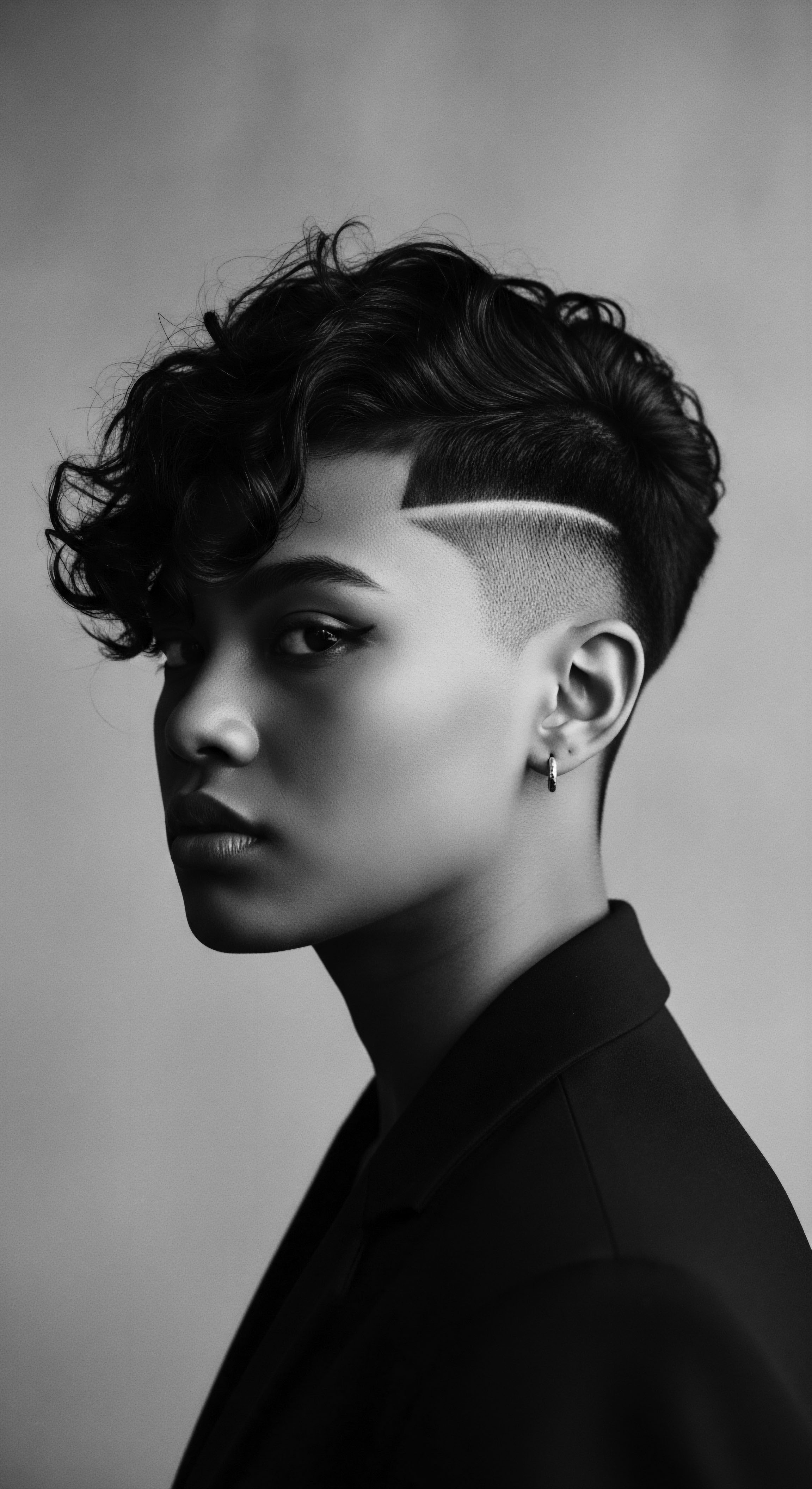
Interconnected Incidences ❉ The Enduring Legacy for Textured Hair Heritage
The study of Ancient Nubian Adornment offers an unparalleled opportunity to trace the deep ancestral roots of textured hair care and styling traditions that resonate with contemporary Black and Mixed-Race Hair Experiences. The practices observed in Nubia—the meticulous braiding, coiling, sectioning, and the integration of external elements for both aesthetic and protective purposes—are not isolated historical curiosities. They represent foundational elements of a global hair heritage that has been carried forward, adapted, and reinvented across generations and geographies, particularly within the African diaspora.
The conceptual framework surrounding hair as a source of power, identity, and resistance, so evident in ancient Nubia, finds powerful echoes in the modern natural hair movement. The emphasis on protective styles, the use of natural ingredients, and the celebration of intrinsic texture are all threads connecting back to these ancient precedents. Understanding Ancient Nubian Adornment provides a historical grounding for the assertion that textured hair, in its natural state, is inherently beautiful, capable of profound artistic expression, and historically a site of cultural pride and spiritual significance. The term thus becomes a lens through which to explore the continuous journey of hair as a profound marker of heritage and an enduring source of self-affirmation.
| Period/Epoch Pre-Dynastic/Early Kerma (c. 3000-2000 BCE) |
| Characteristic Adornment Practices Simple beads (shell, stone), bone pins, natural pigments, early use of gold. |
| Inferred Hair Care/Styling for Textured Hair Protective coiling, braiding, and dreadlocks for climate protection; basic oiling for moisture. |
| Period/Epoch Classical Kerma (c. 2000-1750 BCE) |
| Characteristic Adornment Practices Elaborate necklaces, bracelets, highly refined faience beads, gold jewelry with animal motifs. |
| Inferred Hair Care/Styling for Textured Hair Increased complexity in styled updos and plaits, likely requiring regular cleansing and conditioning to maintain structure and health. |
| Period/Epoch Napatan Period (c. 750-300 BCE) |
| Characteristic Adornment Practices Royal regalia (crowns, uraei), extensive gold work, imported semi-precious stones. |
| Inferred Hair Care/Styling for Textured Hair Highly structured coiffures (braids, twists, sculpted forms) to support heavy adornments; use of oils and possibly plant-based "gels" for hold and shine. |
| Period/Epoch Meroitic Period (c. 300 BCE – 350 CE) |
| Characteristic Adornment Practices Diverse range of jewelry, Hellenistic and Egyptian influences, intricate gold filigree, glass beads, monumental crowns for Kandakes. |
| Inferred Hair Care/Styling for Textured Hair Continued emphasis on protective styles, often with added extensions or woven elements to achieve volume for elaborate crowns; sophisticated detangling and moisturizing routines. |
| Period/Epoch This table illustrates the deep, ancestral connection between Nubian adornment and the practical evolution of textured hair care, underscoring a continuous heritage of ingenuity. |
The continuity of these ancestral practices provides a powerful counter-narrative to colonial impositions that often sought to erase indigenous forms of beauty and self-expression. The careful Explanation of Ancient Nubian Adornment, therefore, serves not only as an academic exercise but also as an act of reclaiming and affirming a rich, unbroken lineage of hair wisdom. It is a testament to the enduring ingenuity of African peoples in adapting their physical being, including their hair, to reflect deeply held beliefs and societal values, creating a lasting legacy that continues to influence contemporary cultural expressions.
- Hair as Identity Marker ❉ Ancient Nubian hair styles, often featuring specific braids or adornments, communicated social status, age, or tribal affiliation.
- Protective Styling Antecedents ❉ The structural demands of heavy Nubian headpieces naturally led to and reinforced protective styling techniques for textured hair, minimizing breakage.
- Ceremonial Significance ❉ Adorned hair played a central role in Nubian religious ceremonies and rituals, symbolizing connection to deities or ancestral spirits.

Reflection on the Heritage of Ancient Nubian Adornment
The narrative of Ancient Nubian Adornment extends beyond the dusty scrolls of history or the hushed reverence of museum halls; it breathes within the very coils and crowns that grace heads today, a resonant echo from the cradle of civilization. This journey into its meaning has been more than an intellectual pursuit; it has been a deeply felt walk through ancestral gardens, where every bead, every braid, every gleam of gold tells a story of enduring beauty and resilience. The essence of this adornment lies not merely in its aesthetic appeal but in its profound demonstration of how deeply interwoven identity, spirit, and communal wisdom are with the very fabric of textured hair.
We have seen how, from the elemental practices of early communities to the regal splendor of Meroitic queens, Nubians understood hair as a living, sacred entity. They did not adorn it superficially; they engaged with its natural capabilities, its strength, its versatility, and its profound connection to the inner self. This ancestral understanding offers a powerful lens through which to view our own relationships with our hair today. It reminds us that the quest for hair health and beauty is not a modern invention but a deeply rooted practice, refined over millennia.
The legacy of Ancient Nubian Adornment truly shines when we consider its implications for Black and Mixed-Race Hair Experiences. It provides a historical affirmation that textured hair has always been a canvas for artistry, a symbol of power, and a source of communal pride. In a world that has often sought to diminish or alter these natural textures, the Nubian narrative stands as a profound testament to their inherent beauty and ancestral significance. This historical continuity empowers individuals to reconnect with their hair’s deeper story, recognizing that the care they bestow upon their coils and kinks carries the whispers of ancient wisdom.
The enduring legacy of Ancient Nubian Adornment serves as a profound historical affirmation of textured hair’s inherent beauty and ancestral significance.
The ‘Soul of a Strand’ ethos finds its true resonance here. Each twist, each braid, each tender application of oil can be viewed as a continuation of an unbroken lineage of care. It is a ritual that honors the ingenuity of those who first understood the unique needs of textured hair in arid climates, who devised protective styles to safeguard it, and who transformed it into magnificent expressions of culture and spirit.
The historical practices surrounding Ancient Nubian Adornment offer not just lessons in archaeology or art, but lessons in self-acceptance, in celebrating one’s unique heritage, and in the timeless dance between human creativity and the gifts of the natural world. It is a reminder that beauty, in its most profound sense, is always rooted in authenticity and ancestral connection.

References
- Adams, William Y. 1977. Nubia ❉ Corridor to Africa. Princeton ❉ Princeton University Press.
- Bianchi, Robert Steven. 2004. Daily Life of the Ancient Egyptians. Westport, CT ❉ Greenwood Press.
- Welsby, Derek A. 2002. The Kingdom of Kush ❉ The Napatan and Meroitic Empires. Princeton ❉ Markus Wiener Publishers.
- Trigger, Bruce G. 1976. Nubia Under the Pharaohs. Boulder ❉ Westview Press.
- Kendall, Timothy. 1997. Kerma and the Kingdom of Kush ❉ 2500-1500 BC ❉ The Archaeological Discovery of an Ancient Nubian Empire. Washington D.C. ❉ National Museum of African Art, Smithsonian Institution.
- Shinnie, P. L. 1967. Meroe ❉ A Civilization of the Sudan. New York ❉ Frederick A. Praeger.
- Dunham, Dows. 1950. The Royal Cemeteries of Kush ❉ Volume I ❉ El Kurru. Boston ❉ Museum of Fine Arts.
- Russmann, Edna R. 2001. Eternal Egypt ❉ Masterworks of Ancient Art from the British Museum. Berkeley ❉ University of California Press.
